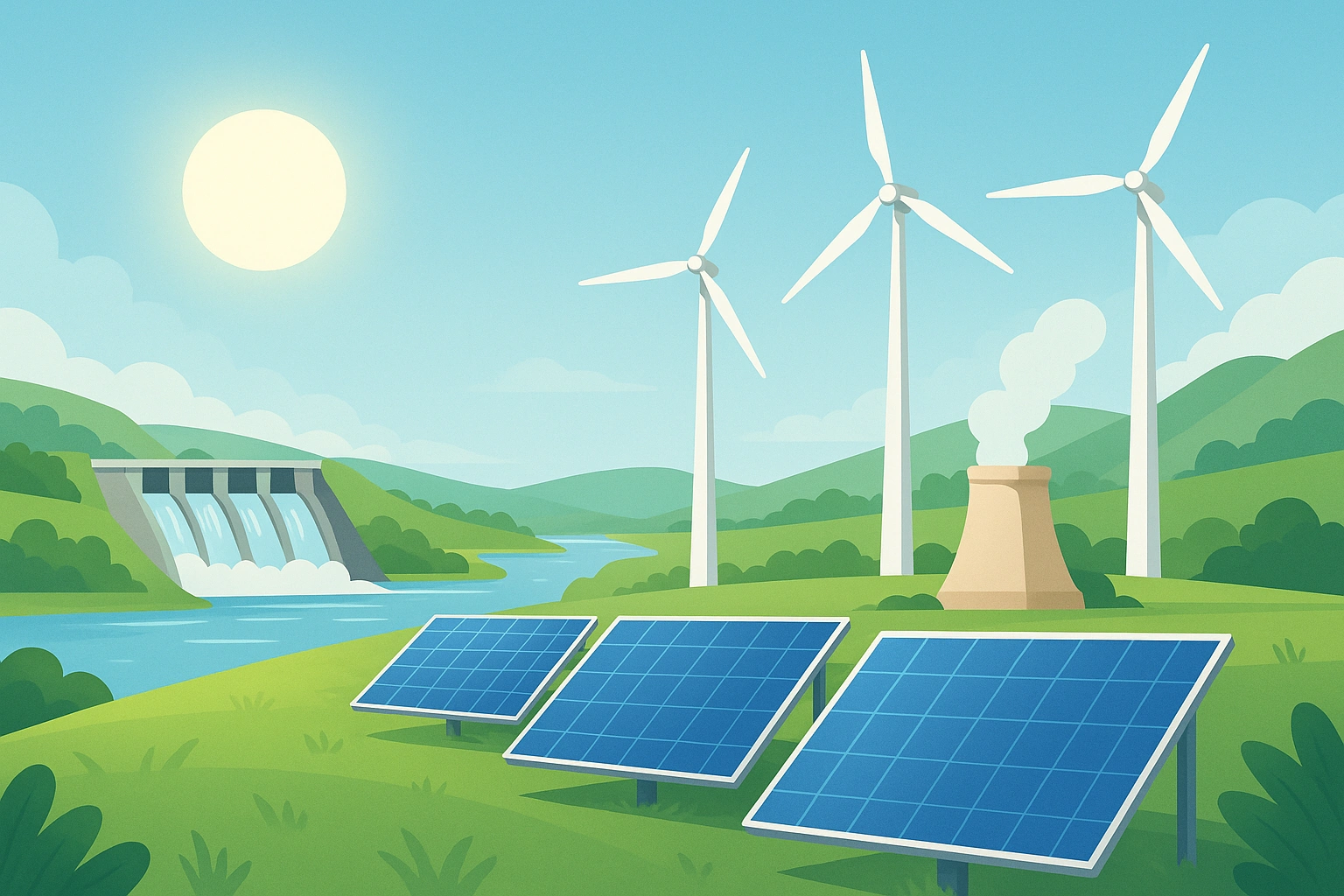The Promise of Renewable Energy

Renewable Energy: A Path to a Sustainable Future
Renewable energy is one of the most important pillars in the world’s quest to counter the effects of climate change, minimize environmental destruction, and develop a sustainable future. With the negative impacts of fossil fuels use ever increasing — such as greenhouse gases, air pollution, and ecological imbalance — the necessity to switch to the use of cleaner, renewable forms of energy becomes ever more serious. Renewable energy can be found in natural processes which will always be replenished, and thus a sure way out in meeting the energy needs and leaving the environment intact to the future generations.
Types of Renewable Energy
Renewable energy is of several major types: each of them uses various natural phenomena to turn into energy. Solar energy collects the sunlight and turns it to electricity or heat. It can have a small rooftops solution all the way up to a large solar farm. Another source of energy transforms the kinetic energy in wind into electricity by use of wind turbines. It works well where there are strong constant winds. Hydroelectric power plants produce the power through utilizing the energy of running water. It is the commonest source of renewable energy worldwide. The geothermal plants use the heat available inside the earth to produce electricity and supply heat. Biomass energy uses combustion or biochemical conversion of such materials as agricultural waste, wood and sometimes even algae to generate electricity, heat, or biofuels using organic materials.
Benefits of Renewable Energy
The benefits of renewable energy are long term, and it involves environmental, economic, and social considerations. The renewable sources generate minimal to no greenhouse gases as opposed to fossils. This will counter climate change and curb pollution thus improving the quality of air and water. Renewable energy also increases the national energy resilience and independence because it will help reduce the dependence on foreign sources of fuels and fossil reserves. The renewable industry has realized being an important source of employment opportunity with employment in manufacturing, installation, maintenance, and research. Renewables offer a bonus of green technological innovation as well. Renewable sources naturally re-grow and unlike the finitely available fossil fuels, they are the reliable source of energy in the long term.
Challenges in Implementation
Along with all the benefits listed, the popularization of renewable energy has a few obstacles. Use of solar and wind power can be unreliable because of weather and time of day constraints. It requires investment in energy storage, distribution grid to manage the supply and demand. However, this is despite the low operation costs; initial cost associated with renewable technologies can be very high particularly in developing areas. Renewable energy sources in most cases are dependent on the geography such as geothermal energy being viable where a volcano is present. Most countries have a market set-up and regulatory system, which is fossil-oriented, inhibiting the shift to renewables.
Technological Advancements and Solutions
To fuzee discussion, the innovations are quite recent and have made renewable energy more efficient and accessible. Through the solid-state battery and lithium-ion technologies, it is possible to employ energy more efficiently which helps in addressing the issue of intermittency. These systems maximise use of energy, multi-source energy and provides real-time feeds to help make better decisions. The new technologies enable energy production even in the locations that were not used before, which gives more space to renewable sources. Green hydrogen is a sustainable energy produced by electrolysis of renewable electricity and has potential to decarbonize those sectors hard to electrify, such as heavy industry and long-haul transport.
The Role in Combating Climate Change
The world strategies on climate action revolve around renewable energy. Countries can minimize carbon footprint by switching the use of carbon-intensive fossil fuels into clean energy. The switch is critical towards achieving global climate goals established under the Paris Agreement and preventing the most severe consequences of global warming. In addition to that, instead of emissions reduction only, the inclusion of renewables into national energy plans will result in long-term ecological stability.
The move towards the green energy does not only present a moral environmental challenge, but it is also an economic and social opening. We shall be able to generate a cleaner, safer, and a fairer energy future through the power of the sun, wind, water, and the earth. The journey is not yet fully clear, but the benefits easily outweigh the expenses, and continued involvement in investment, innovations, and policies is mostly essential to a stable change. Renewable energy is no more an option but a way of achieving a strong and stable planet.











